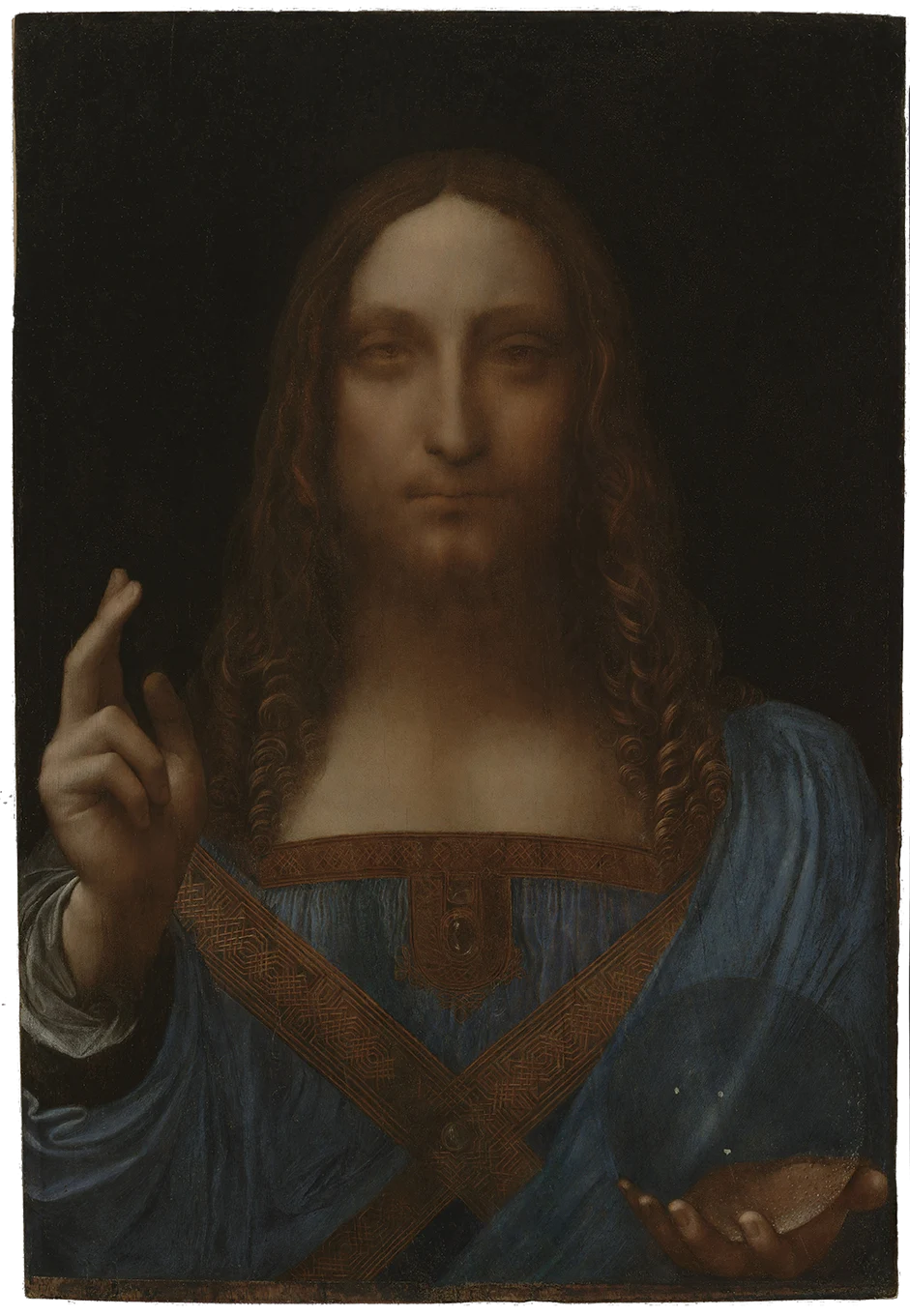An Art Historian on Leonardo da Vinci
In November, Salvator Mundi, a painting attributed to Leonardo da Vinci, was sold at Christie’s auction house for $450 million, the most money ever paid for a work of art. Six years prior, Dr. Jill Pederson, associate professor of Art History, was among a small group of scholars called to London to consider the painting’s attribution to Leonardo. She also examined the work again at Christie’s in New York before it was sold. Pederson specializes in European art with an emphasis on Italian painting, sculpture, and graphic work from the fourteenth through seventeenth centuries, focusing on the intersection of visual, literary, and intellectual culture in northern Italy. She is completing a book on Leonardo da Vinci that aims to deepen understanding of the Renaissance master by providing contextualization for his first Milanese Period (c.1482-1499). Dr. Pederson joined the Arcadia faculty in 2011.
Called to London

I examined the Salvator Mundi with a small group of Leonardo scholars in London when it appeared as part of the National Gallery’s 2011-2012 exhibition on Leonardo da Vinci. I was invited to participate in a private viewing and study because of my specialization in Italian Renaissance art and my publications on Leonardo and his school. In particular, I have worked on the Milanese artist Giovanni Antonio Boltraffio, who was one of Leonardo’s few students and an artist to whom the Salvator Mundi had also been attributed at an earlier point in the twentieth century. As an art historian, I have been trained to understand the historical background of paintings, as well as their connoisseurship. The latter involves the close visual scrutiny of works in order to judge their attribution based on physical details, such as technique, materials, and condition. Art historians are engaged in attributions regularly as part of their research.
The authenticating process varies widely depending on the art object under consideration. If there is solid documentation, something like a period letter, contract, or inventory, the attribution can be relatively straight forward. However, it can still take a considerable period of time to find such a document. Part of what art historians do is research in archives and period sources to find records of or references to art objects. For some works, like the Salvator Mundi, we do not have such a document, so we compare it to related paintings, as well as drawings and prints, to determine the author. In these cases, because we have no firm document, attribution is always a matter of opinion. It is part of the job of scholars to make the case for or against an attribution. The case for the Salvator Mundi has been backed up by a number of leading Leonardo scholars.
Gaps in provenance
A large gap in provenance is generally a problem for art historians. We cannot always trace a work back to its origins, but we like to have as much information as possible. When dealing with a work by someone like Leonardo, it is not unusual to connect the work back through all its owners. Leonardo acquired great fame even in his own lifetime, and he is usually listed as the artist in historical inventories. There are also contemporary literary sources that mention his authorship of certain paintings, such as the Mona Lisa. In the case of the Salvator Mundi, there is no such mention of this work prior to the seventeenth century in England. Much has been made of its resemblance to a seventeenth-century engraving by Wencelaus Hollar, said to be a copy of the original Leonardo painting. There are also many paintings of this subject in Leonardo’s circle. Therefore, it has long been believed that Leonardo was involved in the execution of such a work. However, the Salvator Mundi only surfaced in 1900, when it was sold to Sir Francis Cook. It fell again into obscurity until it was purchased from an American collector in 2005. For most of this period, the painting was attributed to Leonardo’s followers. It was only after the work was restored between 2007 and 2011 that it was considered an autograph Leonardo.
Providing context and attributions
Without documentation, it is hard to be certain if a work is by a particular artist’s hand. As art historians, our research provides context and attributions. Leonardo poses a particular challenge, as he was famously engaged in many kinds of activities simultaneously, and at times these activities distracted him from his painterly endeavors. The Salvator Mundi has been dated around 1500, which is a period when Leonardo had a number of artists collaborating with him in his workshop. Many paintings from this period include Leonardo’s hand, but also involve the participation of other artists. I certainly see Leonardo’s involvement in the Salvator Mundi in the soft, smoky application of paint, known as “sfumato”—this is the hallmark of Leonardo’s style. Yet, there are some discrepancies in Christ’s left hand, where the fingers surround the rock crystal orb. Leonardo was a master of anatomy, and the fingers here do not reflect the delicacy that we typically associate with the artist. It is difficult to say whether this is a question of condition or whether there is more than one artist involved. We have much still to learn about the distribution of labor in Leonardo’s workshop, and also about the use of drawings and preparatory studies. Because this painting has only come to light relatively recently, it will be important for scholars to study it in the years to come.


